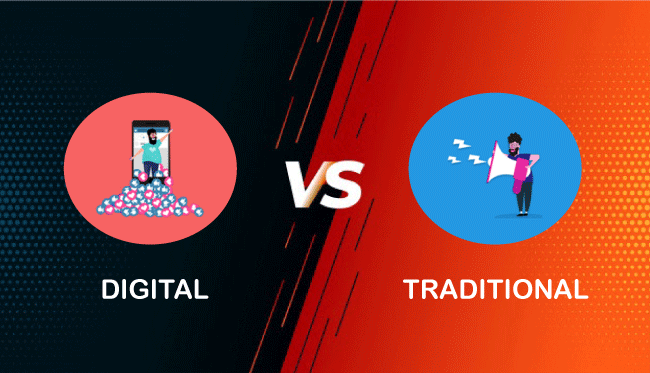Difference between Traditional Commerce and E-commerce
What is Traditonal Commerce?
Traditional commerce is the process of selling goods and services to customers who are part of the same industry and, in certain cases, the same geographic region. Conventional commerce depends on keeping open for a set period, housing inventory, or running a retail space.
Traditional commerce frequently depends on in-person interactions with customers and thrives on word-of-mouth, networking, and repeat business from existing customers. Personal interaction is crucial to a company's success in conventional commerce. In order to build a connection with the community and attract customers, many firms network within the community, build relationships with city officials and chambers of commerce and support local events and sports teams.
What is E-commerce ?
"E-commerce" refers to businesses and individuals that purchase and resell goods and services online. E-commerce can be done on computers, tablets, cellphones, and other smart devices, and it operates in a variety of market categories. E-commerce transactions make almost every good or service accessible, including books, music, airline tickets, and financial services like stock trading and online banking. It is seen as a very disruptive technology as a result. The way individuals purchase and use goods and services has changed as a result of e-commerce. More and more individuals are using their computers and other electronic.
Difference between Traditional Commerce and E-commerce

- Traditional commerce refers to business dealings or information sharing, as well as the buying and selling of goods and services from person to person without the use of the internet. E-commerce is the term used to describe commercial transactions, information sharing, and the electronic purchase and sale of goods and services over the internet.
- Standard practices are hard to establish and maintain in traditional commerce but are simple to build and maintain in e-commerce.
- Traditional commerce involves direct engagement between the vendor and the customer, but online commerce uses electronic media and the internet to facilitate indirect interaction between the seller and the customer.
- E-commerce uses the internet or other network communication technology, while traditional commerce uses face-to-face interactions, telephone calls, or postal services.
- Transaction processing is manual in traditional trade. Yet, in e-commerce, transaction processing is automatic.
- In traditional commerce, things are delivered instantly, while in online commerce, deliveries take some time.
- Conventional commerce is only accessible during certain hours, whereas online commerce is available around-the-clock, seven days a week.
- Where the internet network is not accessible, traditional commerce is conducted. Yet, e-commerce is employed to save both money and important time.
- E-commerce is a more recent business style that falls under e-business. In contrast, traditional commerce is an older approach to business style that belongs to a traditional company.
- The resource in traditional commerce is focused on the supply side, while the resource in e-commerce is focused on the demand side.
- Compared to e-commerce, conventional commerce's commercial reach is limited to a small physical area because it is conducted through a digital medium.
- In traditional trade, there is no such standard platform for customer assistance or information sharing. However, a unified platform is available for information exchange and customer assistance.
|

 For Videos Join Our Youtube Channel: Join Now
For Videos Join Our Youtube Channel: Join Now










